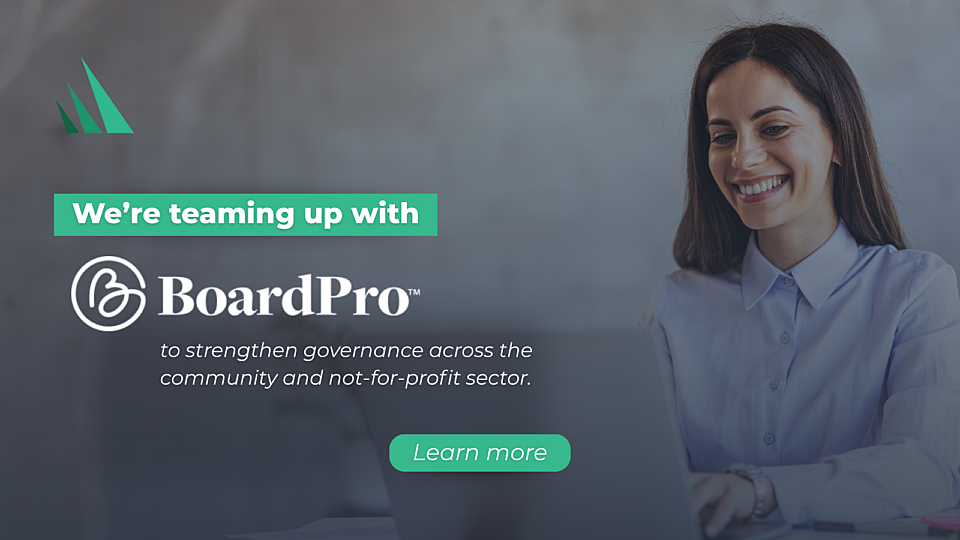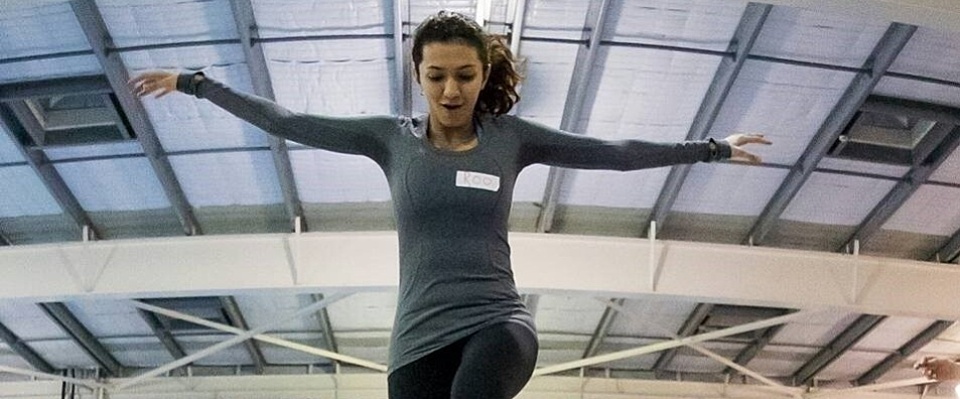
ICDA and BoardPro partnership unlocks digital governance tools for not-for-profits nationwide
Posted on 10 Dec 2025
Adele Stowe-Lindner, Executive Director, Community Directors The Institute of Community Directors…
Posted on 12 Mar 2025
By Aden Date, performing artist and creativity expert

Most of us who take on leadership roles in the not-for-profit sector do so because we want to shift the dial on intractable, complex problems. Our industry is proactive and refuses to take the status quo for granted. This means that the need for creativity is baked into the job description.
However, it’s challenging at times to remember the importance of creative thinking. Each year, the World Economic Forum publishes its Future of Jobs Report, and each year – for the last several years – creative thinking has been in the top five most in-demand skills. This also applies in the NFP sector, where our goal is not only to grow our organisation, but to shift the very social context we operate within.
"The challenge for not-for-profit leaders today is taking what we know about the importance of creativity and using it to make actual, practical changes to our workplace cultures."
It's unlikely that this is news to you. Although we intellectually recognise the importance of creative thinking, we consistently undervalue it in practice. It’s easy to get caught in the operational slough and fail to create the breathing room needed to see the bigger picture. Another study, conducted by Canva in partnership with the Harvard Business Review, found that just 22% of employers excel at nurturing creativity.
The challenge for not-for-profit leaders today is taking what we know about the importance of creativity and using it to make actual, practical changes to our workplace cultures. It isn’t enough to be reminded of creativity’s importance. We have to look at the ways we unintentionally stifle our own creativity and that of our employees, stakeholders and beneficiaries.

Most of what I learned from creativity I learned from creative practice as an improvised theatre performer and teacher. Think Whose Line Is It Anyway? or Thank God You’re Here. When cognitive scientists study creativity, they study improvisation because improvisation is constant creativity.
In improvisation, we have few rigid rules or regulations to structure our play. Instead, we rely on carefully refined skills of attention, listening, and optimism – encapsulated in that well-known phrase “Yes, and—” – to drive our performances forward. What I’ve noticed from a decade of teaching creativity to performers and office professionals alike is that most people are naturally creative, but we tend to get in our own way. We erect barriers and walls rather than say “Yes, and—” to the reality in front of us.

I’m reminded of a story about a man with a disability who refused to shower and was unable to apply for jobs because of his body odour. Countless disability support workers had tried every strategy in the book to get this man to take a shower. One day, at a meeting with a number of his case workers, the man declared: “I quit. I quit you all.” The workers had given up, and now he had too.
That was until one day when a new support worker decided to challenge a core assumption – that you need to shower before a job interview. She took him down to the waterfront, where his body odour was indistinguishable from the smell of fish heads and seaweed, to apply for a job as a dock worker. He was a big, strong guy, and within a few hours he had a solid union job. Within six months, he no longer needed his pension. He even started showering – on his own terms.
What we learn in improvisation is that a key element of creativity is being able to break self-imposed constraints on our thinking. Our minds aren’t capable of holding large volumes of information at once (think back to your most recent board or impact report!), so we tend to perceive information in ways that reinforce our preconceptions. We engineer our own constraints. Yes, our operating and regulatory environment is complex, but the most constraining regulations might be the ones we have invented for ourselves.
I saw this plain as day when running a workshop with a federal government agency in mid-2024. I noticed that this agency still had masking tape on the floor to encourage social distancing. My client said, “We should tear that up,” and bent down to pull the tape off the floor… then he hesitated. He cast an eye at his colleague and me, and neither of us felt we could tear it up either. We had imagined some constraint, some authority, that was preventing us from taking a simple, creative action.
Creativity involves turning the lens back on ourselves to observe how we’re constructing things, so we can free ourselves of constraints – real and imagined. For NFP leaders, there are a few simple (though not easy!) things we can do to free our organisations of unnecessary constraints and create more space for creative thinking.
An often-cited study titled The Invisible Gorilla Strikes Again asked radiologists to perform a lung-nodule detection task. For radiologists, this was simple work. Indeed, the work was so simple that 83% of study participants failed to notice an image of a gorilla, 48 times the size of the average nodule, inserted in the last case presented to them.
In meetings and brainstorming sessions, often the most highly trained experts fail to see the proverbial gorilla. In a culture of psychosocial safety, the 17% of participants who do see the gorilla feel safe to mention it, breaking the habitual patterns of thinking of the remaining 83%.

Not-for-profit leaders are drowning in memos, impact reports and half-day meetings that are intended to help them make sense of complexity so they can make good decisions. Of course, these leaders have the same brains as everyone else – brains that struggle to remember a ten-digit phone number, a shopping list or an email password.
To promote organisational creativity, we need to flip things around. Instead of bringing data to leaders, bestow leadership on those who have data. Give the people working on the frontline permission to make decisions based on what they’re seeing and sensing. This distributes creativity, promotes well-being and agency, and frees up senior leadership to focus their energy on the most important decisions.
Given the difficulties in making our organisations more creative, leaders could be forgiven for thinking that creativity is complex. However, as anyone with children will recognise, to be creative is to be human – and so human-centred workplaces tend to be creative ones too.
Workplace creativity isn’t a skill to be isolated and nurtured like a specimen in a test tube. Rather, it’s the fruit of a workplace culture that supports our flourishing as people. If our people are seen with a mindset of possibility – with an assumption that they are capable, autonomous, creative adults capable of growth and development – we will discover that the creativity we need is not a skill to be developed, but a natural tendency that emerges under supportive conditions.

Posted on 10 Dec 2025
Adele Stowe-Lindner, Executive Director, Community Directors The Institute of Community Directors…

Posted on 10 Dec 2025
The Australia Institute has called on the federal government to force Australian businesses to be…

Posted on 10 Dec 2025
Economic empowerment is essential to enabling recovery, restoring agency and preventing future…
Posted on 10 Dec 2025
A long-time advocate for rough sleepers in northern New South Wales has been named her state’s…

Posted on 10 Dec 2025
What a year 2025 has been, particularly at a national level where the Parliament and politics as we…

Posted on 10 Dec 2025
Anyone working in an organisation knows it: meetings follow one after another at a frantic pace. On…

Posted on 10 Dec 2025
As a qualified yoga instructor who learned the practice in her hometown of Mumbai, Ruhee Meghani…

Posted on 10 Dec 2025
Community Directors trainer Jon Staley knows from first-hand experience the cost of ignoring…

Posted on 10 Dec 2025
Stressed, overwhelmed, exhausted… if you’re on a not-for-profit board and these words sound…

Posted on 10 Dec 2025
The Institute of Community Directors Australia trains over 22,000 people each year, which gives us…

Posted on 09 Dec 2025
The late Sir Vincent Fairfax is remembered as a business leader, a chairman of AMP, and an active…

Posted on 08 Dec 2025
A pioneering welfare effort that helps solo mums into self-employment, a First Nations-led impact…